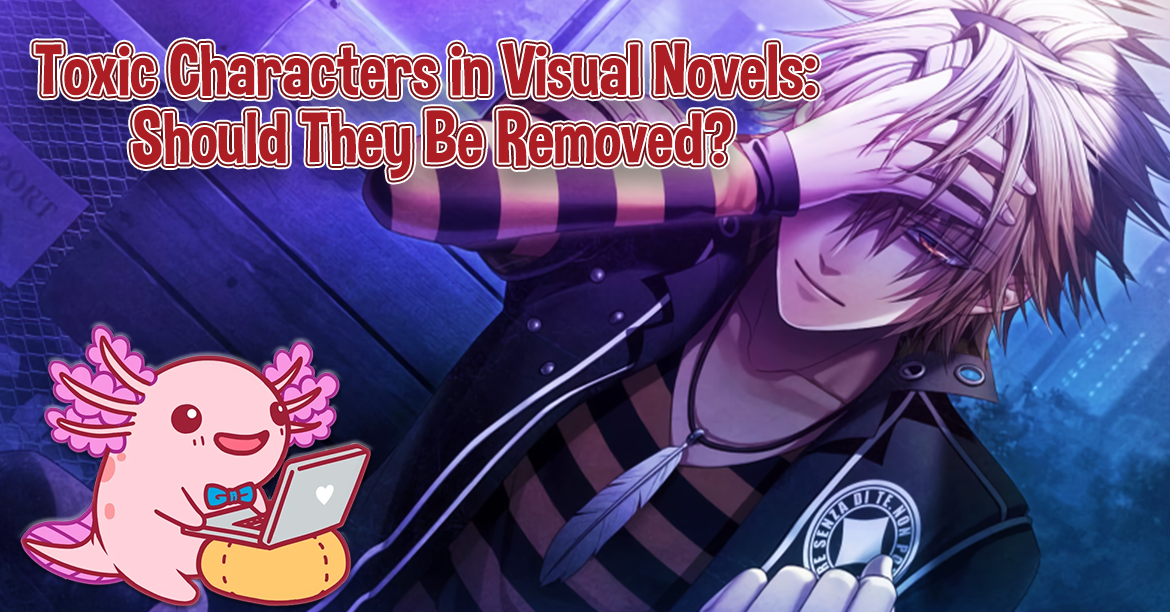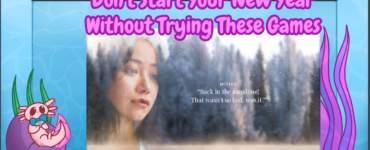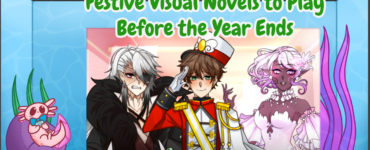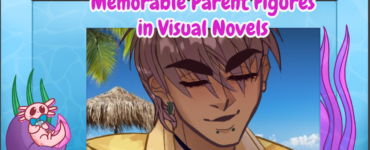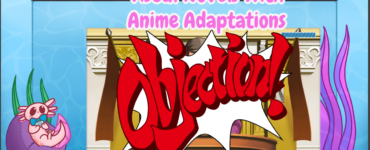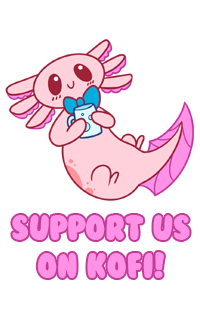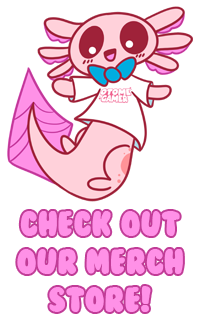A few weeks ago, Boyfriend Dungeon became the center of attention within the gaming community, and not for a good reason. People who played the game were uncomfortable with Eric, an antagonistic character with questionable behavior. He would send the player creepy text messages, send them gifts, stalk them, and emotionally manipulate them and send threats. While the game had a content warning at the start, stating: “This game may include references to unwanted advances, stalking, and other forms of emotional manipulation. Play with care,” it wasn’t enough to prepare players for the heavy content ahead. Kitfox Games has since updated the content warning to better capture the sensitive material that occurs in the game. However, even with an apology and the update, players are asking for the developer to outright remove Eric. That got me thinking about similar characters in visual novels.
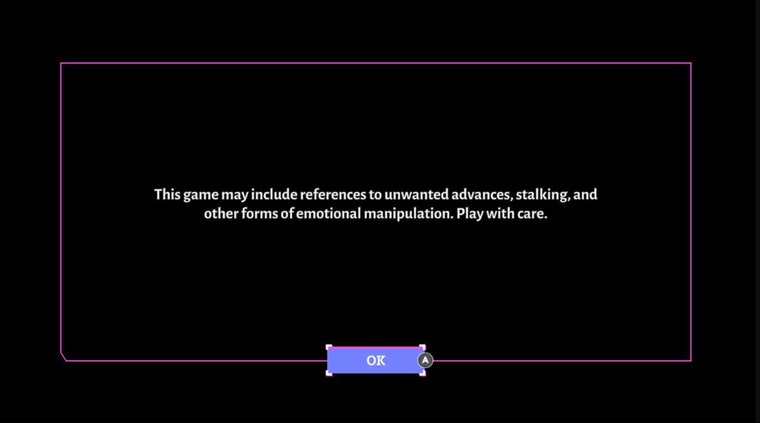
Visual novels, more often than not, have some troubling characters lurking in their stories. With how toxic these characters can be, should they be removed from their respective games in order to make the player more comfortable? After all, video games are a tool of escape for some. However, there are others who enjoy these characters because they add some thrill or even excitement to their game. They are what help make their games stand out from the rest. Plus, doesn’t every video game need an antagonist?
So, let’s talk about it.
WARNING: This article will spoil Doki Doki Literature Club!, Hatoful Boyfriend, and Amnesia: Memories.
Doki Doki Literature Club!, Its Contents, and Monika
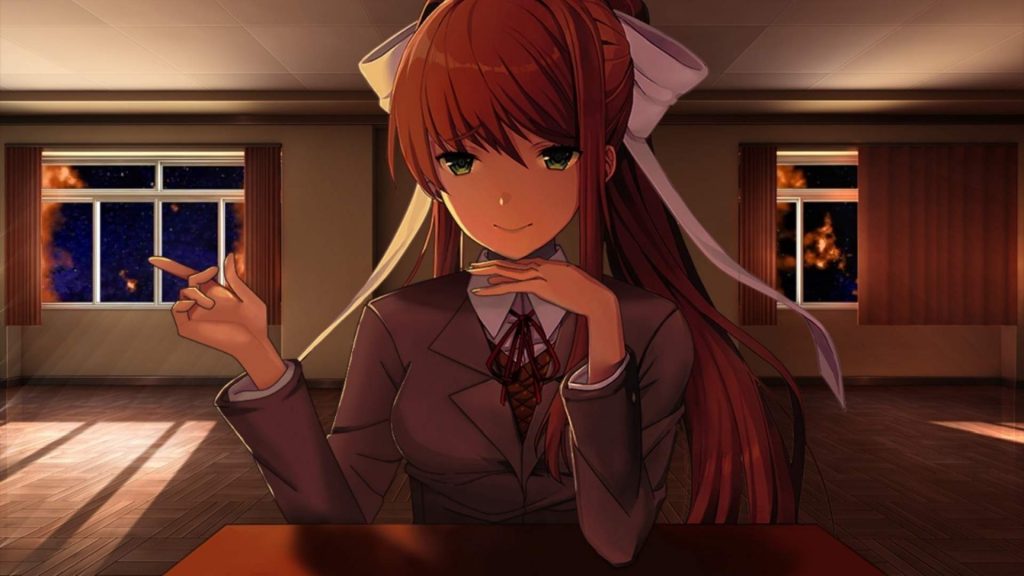
Let’s begin with a visual novel that many people have played, Doki Doki Literature Club!. DDLC features the following sensitive content: suicide (which is shown on screen), self-harm, manipulation, and mentions of abuse, all of which are instigated by Monika, the game’s antagonist. She slowly eliminates her fellow club members in order to get close to you, the player. After each playthrough, she adds files onto your computer, some of which are text files of either poetry or Monika writing down her thoughts, while others are disturbing drawings. She essentially invades your personal space and makes you well aware of how much control she truly has. It’s scary if you think about it.
And what’s truly sickening about her is that she claims to love and care about you. However, someone who truly loves and cares about you knows that certain lines shouldn’t be crossed, such as going through your computer or interfering with your relationships. Granted, Monika does eventually undo everything and seems to feel bad for all the tragedy she’s caused. But again, she could have stopped at any point. She could have stopped at Sayori’s death or Yuri’s. She could have comforted Natsuki when she was all alone instead of deleting her. However, she didn’t.
Without Monika, Doki Doki Literature Club! would just be a regular old romance game where you write mediocre poetry to win over a girl’s heart. None of the tragedy would have taken place. DDLC would have been a happy little game.
But then Doki Doki Literature Club! wouldn’t be Doki Doki Literature Club!.
Shuu from Hatoful Boyfriend
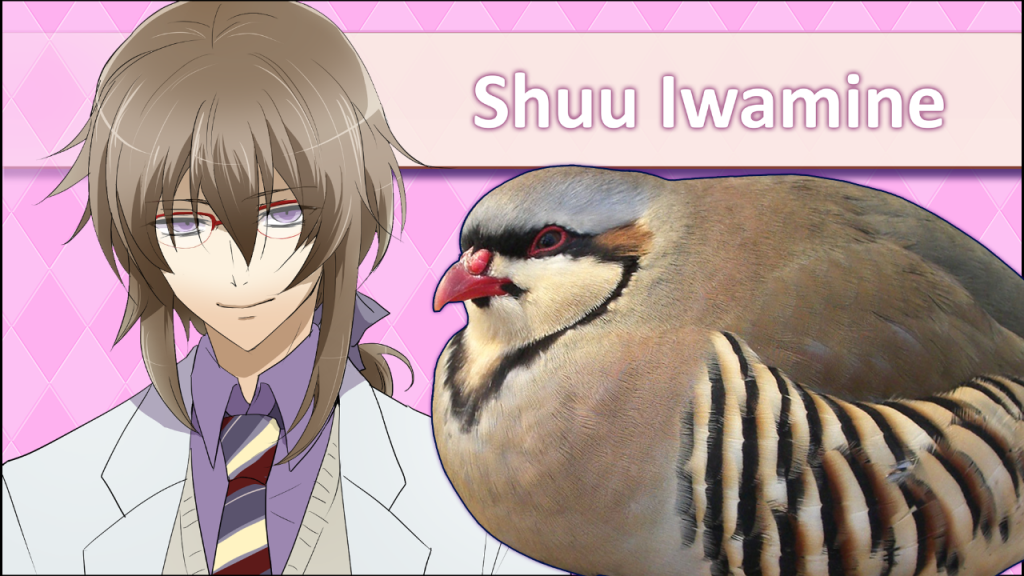
Perhaps one of my favorite games features one very problematic bird: Shuu. Aside from the true route, Shuu’s route was the one that made me most uncomfortable. In his route, it’s inferred that he’s performed experiments on students who have suddenly gone missing within the school. He talks about how he would like to dissect people, and seeing people become fearful of him brings him extreme pleasure.
Despite this, the main heroine gets close with him and you think he feels the same way. However, he doesn’t care for her as a person. Rather, he sees her as a means to an end. At the end of his route, he kills the heroine and walks around with her severed head.
Again, if we were to remove Shuu, we wouldn’t have any of the issues listed above. We wouldn’t have a problematic character who is a love interest that doesn’t and will never feel the same way. He only sees the player character as someone else to experiment on. However, how would that affect the overall game? I’ll explain that one later. Let’s move onto the next character, someone whom the otome community is well aware of.
Toma from Amnesia: Memories
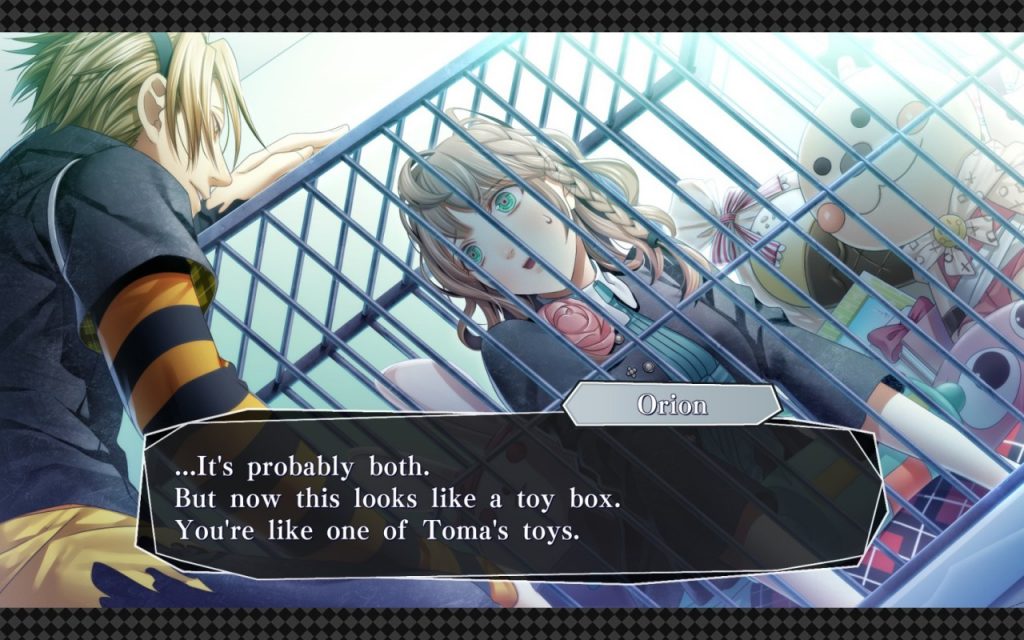
It was hard for me to decide who to focus on, Ukyo or Toma. I’ve decided to go with Toma, but trust me, Ukyo has his problems too.
At first, Toma from Amnesia: Memories appears to be a kindhearted individual. When the main heroine wakes up in the hospital with no memories, he’s right by her side, comforting her as she tries to gather what’s going on around her. Toma claims to be her boyfriend, which the heroine accepts as fact. As the route progresses, you see him protect the heroine from Ikki’s fangirls by calling them out on their behavior and even cleaning up the hate mail they put in the heroine’s mailbox. However, during these interactions, although he’s only trying to protect the heroine, you can’t help but be a little put off by how aggressive he is.
When the harassment becomes too much, Toma tells the heroine to stay inside his home so she can be safe. This is where his behavior starts to become alarming. While he makes food for the heroine every day, she quickly passes out after she’s done eating, which is…a little weird. He also gets the heroine a new phone, claiming the old one was broken. However, you’ll notice that none of her old contacts are in there. Surely, if Toma were as nice as he seemed, he would have transferred the heroine’s friends’ numbers over to the new phone.
With a combination of needing to get her memories back and being suspicious of Toma’s behavior, she leaves his house and goes to her home, where she discovers that her old phone is actually in working condition and her friends are worried about her.
Eventually, when everything is brought to light, Toma puts the heroine inside a cage. Yep.
In the bad ending for Toma’s route, the heroine is chained up and drugged every day, forced to be Toma’s doll for as long as he desires. It’s…disturbing, to say the least.
The Impact Removing These Characters Would Have
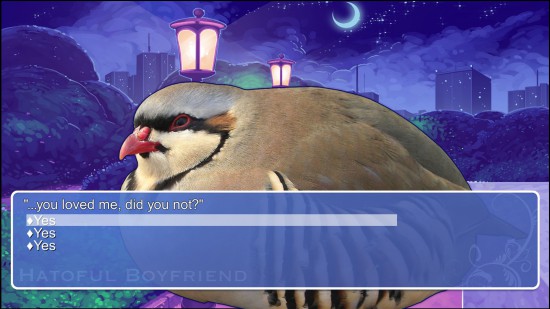
Now, I’ve listed three examples of games with toxic characters: Doki Doki Literature Club!, Hatoful Boyfriend, and Amnesia: Memories. Should these characters be removed from their games because of their problematic behavior so people can be comfortable?
No, and I’ll tell you why.
First, as much as I am for people being comfortable playing any game that they want, that doesn’t necessarily mean that every game should be catered to them. If all game developers tried to make games that appeal to everyone, games would be pretty boring. We’d all be essentially playing the same game over and over again with nothing unique about them. Let’s be honest, would people be talking about Doki Doki Literature Club! if it was simply a game about cute anime girls and writing mediocre poetry? I highly doubt it.
Secondly, you’d also have to think about how removing these characters from their games would affect the overall game. Not only do they serve as the games’ antagonists, but they’re so heavily involved in the overall plot that removing them would only hurt their games’ stories. There’s a reason the character is there. Their presence has an importance to the story, and if you were to remove them, you’re essentially taking a piece of the story away. You’d have an incomplete narrative. That’s why you can’t skip over Toma or Shuu’s routes, or remove them entirely from their respective games. As much as they might make us uncomfortable, they’re important to the overall story.
Lastly, I think they serve as a reminder to all of us that there are bad people out there in the world. (Or in Shuu’s case, bad birds.)
Monika and Toma both exhibit possessive behavior. They both try their best to alienate the player character from their friends in order to keep them all to themselves.
Meanwhile, Shuu is a reminder that there are people out there who don’t care for you in the slightest, even if you think the world of them. These people only see you as a stepping stone to achieve whatever goal they have in mind. In this case, Shuu saw the heroine of Hatoful Boyfriend as a way to further his experiments.
Conclusion
While I’ve only listed three characters here, there are plenty more out there in visual novels. If I tried to talk about them all, I think this article would qualify as a full-fledged research paper.
Now, as much as I hate these characters due to how uncomfortable they make me, I can’t see myself wishing for their removal. Without them, would we even have the games we have? Would the games be as interesting as they are without their inclusion? In my opinion, no, I don’t think they would.
So, to answer the question I posed earlier in the article, no, problematic characters shouldn’t be removed from games. What I do think is game developers need to do a better job at warning the player of these characters and their toxic behavior. The issue with Boyfriend Dungeon is that its original content warning inadequately described the game’s events. It’ll be one thing if someone brought up past trauma with stalking or emotional manipulation in conversation. That’s referencing it. But experiencing all these things from a recurring character like Eric? That’s different.
So, with that being said, while we can have toxic characters in visual novels, we just have to do a better job at warning players about them. That way, no one will get hurt.

